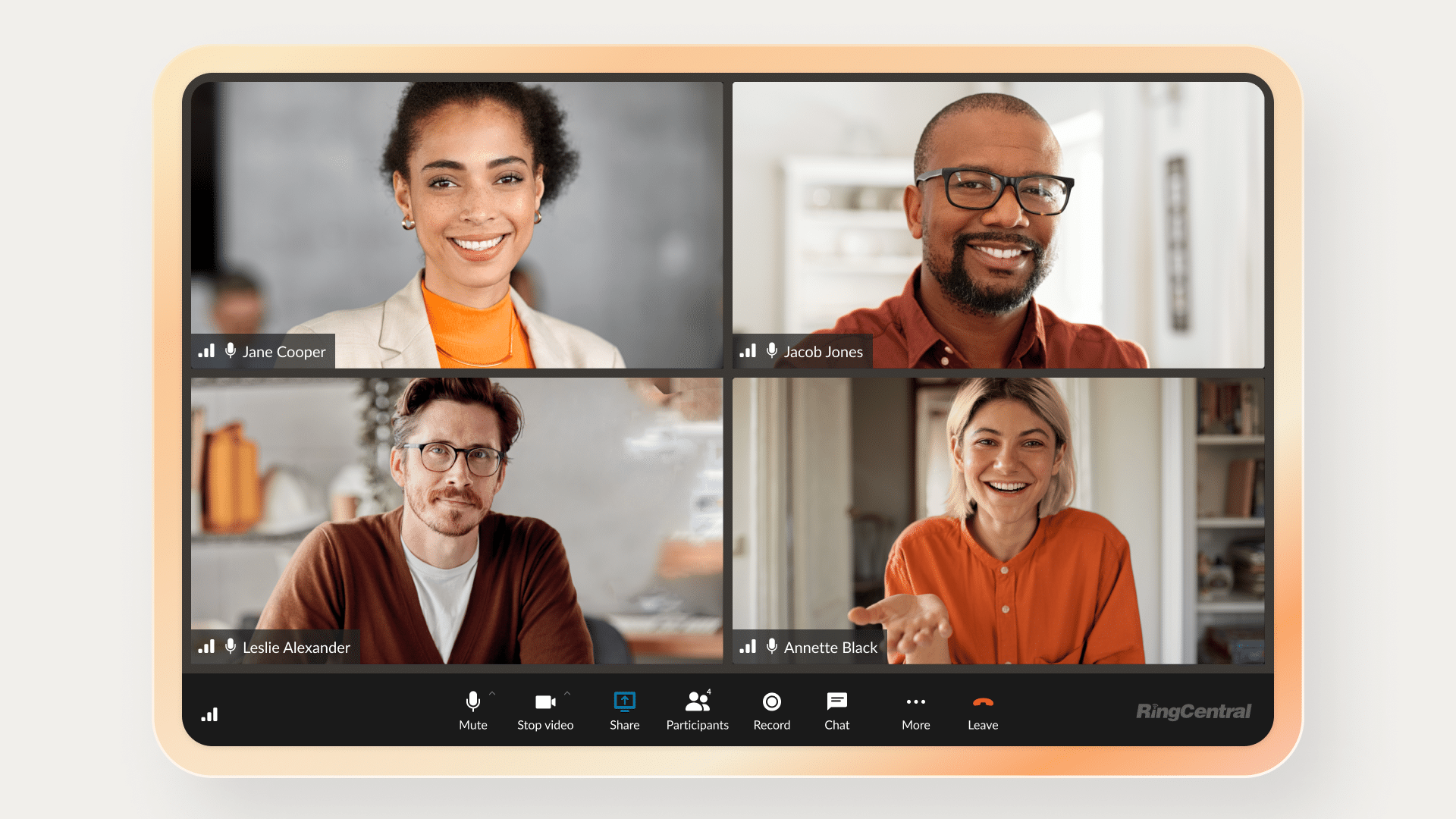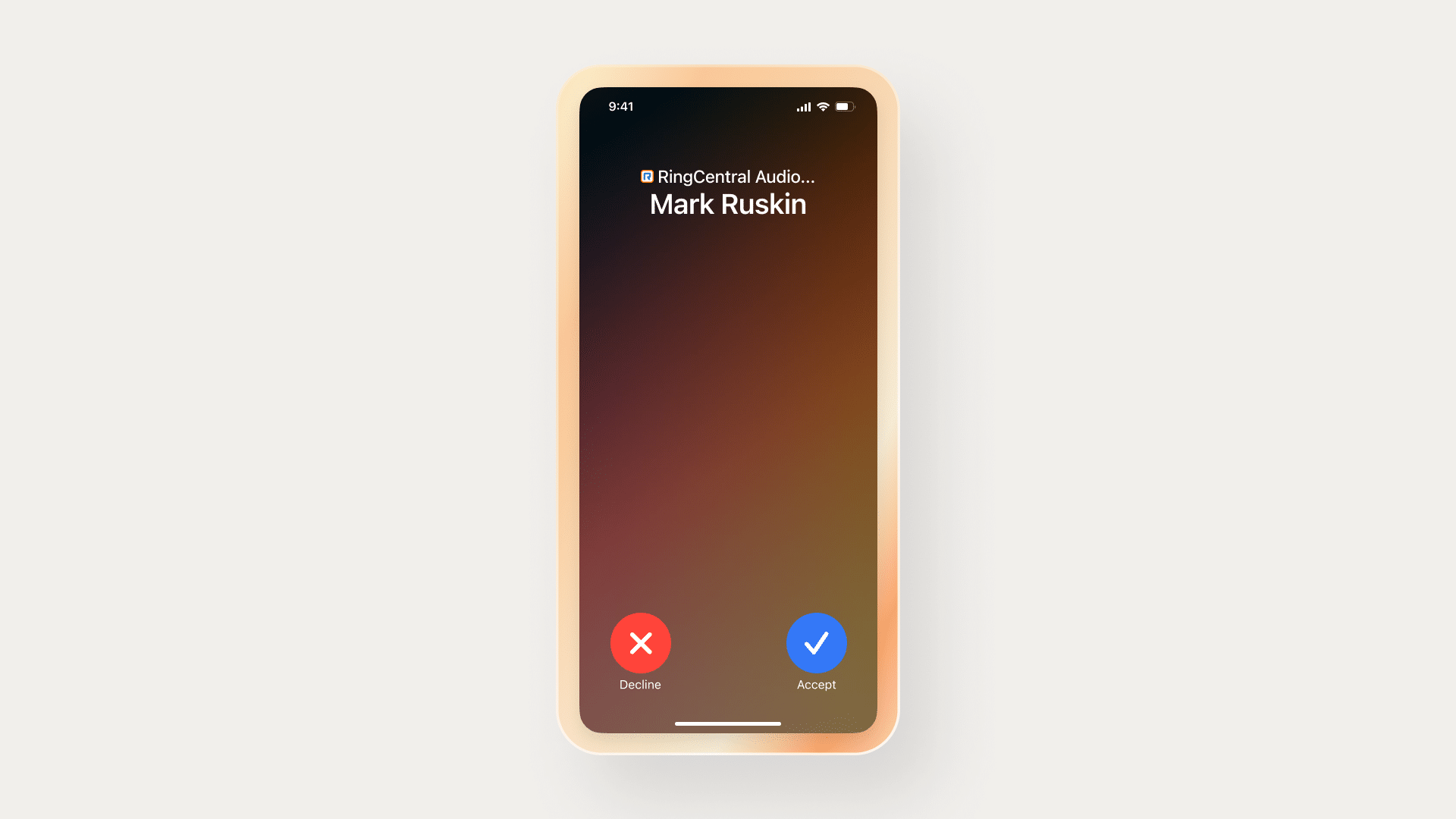Ever wished you could take your office phone—or even your entire small business phone service—with you wherever you go? Good news—you can. Knowing how to transfer landline calls to a cell phone will allow you to stay connected whether you’re at your desk or on the move.
In this guide, we’ll show you how to set up call forwarding from your landline to your cell phone. It’s simpler than you might think, and it can make a real difference in how you manage your communications.
We’ll also introduce you to some modern alternatives that go beyond basic call forwarding features. You’ll learn about virtual phone systems and their benefits, like scalability and cost savings. These solutions can help you work smarter, not harder. Many providers even offer the option to get a custom phone number that’s memorable and aligned with your brand, enhancing your professional image.
Ready to take your first step toward more flexible communication? Let’s dive in and explore how RingCentral can help you stay connected, no matter where business takes you.
How to forward landline calls to a cell phone in 5 easy steps
Transferring incoming calls from a landline number to your cell phone doesn’t have to be complicated. By following these five straightforward steps explaining how to forward a call from a landline to a cell phone, you can ensure you’re always reachable, even when you’re away from your desk:
-
Check your landline provider’s forwarding options
Before you start, contact your landline service provider or check their website. Most providers offer call forwarding as a standard feature, but it’s good to confirm. Ask about any potential fees associated with call forwarding to avoid surprises on your bill.
-
Activate call forwarding
To be able to forward calls from landline to cell phone, you’ll typically use your landline phone to dial a specific code followed by the telephone number you want to forward calls to.
Here’s a general guide:
- Pick up your landline handset and listen for the dial tone.
- Dial ”*72” (the most common call forwarding activation code).
- Enter the phone number that you want to forward calls to, including the area code. To check that the call-forwarding process is working, first try entering your own cell number or home phone number for this step.
- Wait for a confirmation tone or message.
Remember, codes can vary by provider, so double-check with your specific carrier (by which we mean the likes of Verizon or T-Mobile, etc.) if this doesn’t work.
-
Test the forwarding
After setting up call forwarding, it’s crucial to test it. Especially, if it’s going to be a part of your company’s customer support offering or otherwise handle important business calls.
To do this:
- Use another phone to call your landline number.
- Check that your cell phone rings.
- Answer the call to confirm the connection quality.
-
Manage your forwarded calls
Once forwarding is active, calls to your landline will ring on your cell phone. Keep in mind:
- Your cell phone plan’s minutes may be used for these calls.
- You might want to set up a unique ringtone for forwarded calls to distinguish them from regular cell phone calls.
-
Deactivate call forwarding
When you’re ready to turn off call forwarding:
- Pick up your landline handset.
- Dial “*73” (the most common deactivation code).
- Wait for the confirmation tone or message.
Again, verify the correct code with your provider if needed.
While these steps work for most traditional landlines, it’s worth noting that they might not apply to VoIP (Voice over Internet Protocol) systems. If you’re using a VoIP service, you may have a web-based control panel where you can set up and manage call forwarding with just a few clicks.
Remember, basic call forwarding is just the tip of the iceberg. Modern virtual phone systems offer more advanced features that can streamline your communication even further.
In the next section, we’ll explore what RingCentral has to offer and how it can benefit your business communication strategy.
A more modern call forwarding alternative
Knowing how to transfer calls from landline to cell phone using the traditional method is fine, but RingCentral offers a more comprehensive, AI-powered business phone system that goes beyond simple call forwarding options.
This cloud-based solution unifies your business communications, providing a single, intuitive app for calls, video conferencing, text messages, instant messaging, fax, and more across all your devices.

Key features of RingCentral’s business phone system include:
- Complete communication hub: One virtual number for calls and faxes, with features to suit every business need.
- AI-powered tools: RingSense AI acts as a personal assistant, taking notes, recalling details, and providing real-time and post-interaction insights.
- User-friendly setup: Get your system up and running in minutes with easy-to-build workflows for voice and contact management.
- Connect your favorite tools: Use the apps you love. RingCentral can be integrated with over 300 business tools, including your CRM.
- Reliability and security: The RingCentral platform boasts a five-year track record of 99.999% uptime in 46 countries and globally recognized security certifications.
- Flexible call management: Set up basic or advanced call routing rules, automatic call recording, and customizable business hours and caller ID.
- Go global: Managing teams across the world? No problem. RingCentral speaks 18 languages.
By choosing RingCentral, you’re not just forwarding calls—you’re upgrading to a smart, flexible, and comprehensive communication system designed to enhance productivity and improve customer interactions.
You can still forward calls to your cell phone with RingCentral, of course, and it’s nice and easy.
Here’s how, if the cell you want to forward calls to has a non-RingCentral mobile number:
- Sign in to your RingCentral account and head to Settings
- Head to Call Forwarding and Voicemail and then the Work Hours tab
- Click Add number or coworker and then select Number in the Name column
- Enter the name and number of the cell phone you wish to forward calls to
- Set how long you wish calls to ring for in the Ring For column
- Toggle on the switch in the Active column and then select Save.

Of course, if you use RingCentral and RingCentral phone numbers on your cell phone things are even easier. You can make and take calls with those numbers on any device you like—no transfers or call forwarding required.
Other key benefits of virtual phone systems
As well as making call forwarding much easier and more intuitive, virtual phone systems offer other significant advantages over traditional landlines:
Scalability
One of the biggest challenges for growing businesses is scaling their communication systems. With a virtual phone system, this becomes a breeze.
As your team expands, you can easily add new numbers, users, or lines without the need for additional hardware or complex installations. Need to set up a new department? You can create and assign new extensions in minutes, not days.
During busy seasons, you might need to temporarily increase your capacity. Virtual systems allow you to scale up or down quickly, ensuring you’re only paying for what you need when you need it.
Here’s how scalability works in practice:
- Add new team members instantly: Assign different numbers and extensions with a few clicks.
- Create call groups on the fly: Set up departments or project teams without rewiring your office.
- Adjust call routing in real-time: Handle increased call volumes by tweaking your call flow.
This flexibility extends to your physical locations too. Opening a new office? Your virtual phone system can be up and running there as quickly as your internet connection.
Scalability isn’t just about growth—it’s about adapting. Whether you’re expanding, restructuring, or adjusting to market changes, a virtual phone system gives you the agility to adapt your communications to your current needs.
Cost savings
Switching to a virtual phone system can lead to significant cost savings for your business.
Here’s how:
- Reduced hardware costs: With a cloud-based system, you don’t need to invest in expensive PBX hardware. Your existing internet connection and computers or smartphones can serve as your phone system.
- Lower maintenance expenses: Traditional phone systems require regular maintenance and updates. Virtual systems are maintained by the provider, reducing your IT overhead.
- Economical long-distance calls: Many virtual phone systems offer free or low-cost long-distance calls, which can substantially reduce your monthly phone bill.
- Pay-as-you-grow model: You only pay for the lines and features you need. As your business grows, you can add capacity without large upfront investments.
- Bundled features: Features that would be add-ons with traditional systems (like voicemail-to-email or auto-attendant) are often included as part of your monthly pricing.
- Reduced travel costs: With advanced features like video conferencing, you can cut down on travel expenses for meetings.
Here’s a real-world example: A mid-sized company with 50 employees might spend $20,000 on a traditional PBX system, plus ongoing maintenance. With a virtual system, they could pay as little as $1,000 per month, including all maintenance. Over time, these savings can be substantial.
Easy integration
In today’s interconnected business world, your phone system shouldn’t exist in isolation. Virtual phone systems shine when they’re integrated with other business tools.
RingCentral, for instance, is a unified communications solution combining calls, video conferencing, team messaging, and more. What’s more, there are also over 300 other tools with which RingCentral can natively integrate.
This means your phone system can work hand-in-hand with your:
- Customer Relationship Management (CRM) software: Imagine clicking on a contact in your CRM and having the call automatically dialed or having call logs and recordings automatically attached to customer records.
- Productivity suites: Integrate with tools like Microsoft 365 or Google Workspace to schedule calls directly from your calendar or start a call from an email thread.
- Project management tools: Set up automated notifications for important calls related to specific projects.
- Help desk software: Route calls based on ticket status or automatically create new tickets from calls.
These integrations can streamline your workflows significantly. For example, a sales rep could have a customer’s entire history pop up on their screen as soon as the call connects, allowing for more personalized and efficient interactions.
The best part? Most of these integrations can be set up with just a few clicks—no coding required. This ease of integration means you can create a customized, efficient communication ecosystem that works the way you do.
Increased mobility
In an era when remote work and flexible schedules are becoming the norm, increased mobility is a game-changer. Virtual phone systems excel in this area, turning the concept of a “desk phone” into an outdated notion.
With a system like RingCentral, your business phone goes wherever you go—as long as there’s internet service. Here’s what this means for you and your team:
- Work from anywhere: Whether you’re at home, in a coffee shop, or halfway around the world, you can make and receive calls as if you’re in the office.
- Device flexibility: Use your desk phone, computer, tablet, or smartphone (Android or iPhone)—your business number works on all of them.
- Seamless transitions: Start a call at your desk and continue it on your mobile as you head out for lunch, without the other party even noticing.
- Professional presence: Regardless of where you’re working, you always present a professional image with features like custom greetings and business caller ID.
- Never miss a call: Set up “Find Me/Follow Me” rules to route calls to different devices based on your schedule, and make missed calls a thing of the past.
This mobility can lead to increased productivity and better work-life balance. For instance, a manager expecting an important call doesn’t have to be tethered to their desk—they can take a walk or grab lunch while remaining reachable.
Remember, in today’s business world, mobility isn’t just a perk—it’s a necessity for staying competitive and responsive.
Simplify call forwarding with RingCentral
Now you know how to transfer landline calls to a cell phone, are you ready to take your business phone system to the next level? RingCentral puts the power of AI-driven communication in your hands.
With RingCentral, you get:
- An all-in-one solution: Calls, faxes, and messages—all in one easy-to-use app.
- AI smarts: Get real-time notes, call summaries, and even insights into call sentiment.
- Flexibility: Keep your numbers or get new ones. Use your personal devices securely for business.
- Smart call handling: Route calls your way, set up phone menus, and manage busy periods with ease.
- Global reach: Speak your customers’ language wherever they are with the help of our AI which features a variety of language options, including Spanish, German, and French.
- A solution that works with your favorite tools: Connect RingCentral to your CRM and other business apps.
- A reliable internet phone service: With high uptime and strong security, you can focus on your business instead of your phone system.
RingCentral helps you work smarter. You’ll find it easier to stay in touch with your team and serve your customers better. Plus, with call recording and analytics, you can keep improving how you communicate.
Ready to transform your business communications? RingCentral offers a comprehensive solution that goes far beyond simple call forwarding, empowering your business to communicate more effectively in today’s dynamic work environment.
Call forwarding FAQs
How do I connect my landline phone to my cell phone?
With a traditional landline phone, forwarding calls to a cell phone usually means you have to dial a “Star Code” (usually *73) on your landline and then enter the cell phone number. With a VoIP-based system like RingEX, it’s as simple as a few clicks in your account—plus, your RingCentral business numbers work across devices anyway.
Can I transfer my landline number to a mobile phone?
You can often actually port landline numbers over for use on a mobile device if you desire. Better yet, it’s quick and easy to port existing landline numbers into RingCentral. If you do that, you can use it through your RingCentral account on any phone or other device with an internet connection that you like.
Updated Mar 31, 2025











